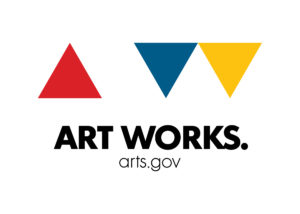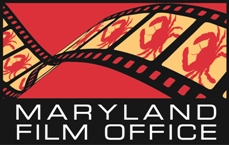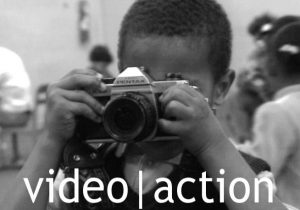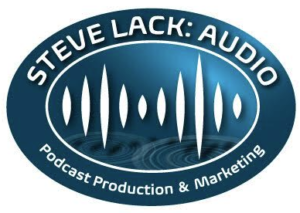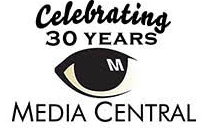WIFTI Summit 2012 and ScriptDC
“Leave Nothing on the Table”, Crowdfunding Master Class
University of California Washington Center in Washington, DC
Sunday, December 2, 10 a.m.
Writer: Vicki Warren, Women in Film & Video DC Member
Need cash to finish your film? Or maybe a nest egg to start production? If so, you may find yourself joining more and more filmmakers who are turning to crowdfunding as the path to fill a budget hole. But as filmmaker Kiley Kraskouskas pointed out to those attending her Crowdfunding Master Class workshop, if you choose that route, you need to be prepared to give up sleeping.

Kraskouskas learned the ins and outs of the art of crowdfunding when she decided to produce her first film. A friend, Andrea Papitto, told her about an incredible annual music festival in the desert of Mali. Papitto had attended Festival au Desert in 2008 and was so moved by the experience that she wanted to capture it on film. She enlisted Kraskouskas’ help and together the two began planning how to make Essakane, the film, happen. The first problem was time—by the time they made their decision, it was already June 2010 and the next festival would be in January 2011. Papitto and Kraskouskas knew they could wait until January 2012, but there was a risk—Al Queda was already becoming more and more of a force in Mali and the presence of the terrorist group threatened the existence of the festival. So the two women decided to go for it and use Kickstarter to raise the money they needed.
Kraskouskas estimated they needed $100,000 to make the film, yet research told her that smaller campaigns had a better chance of success on Kickstarter. In fact, according to Kraskouskas, the most successful campaigns on Kickstarter are designed to raise less than $10,000. So her first step and the first step in any successful crowdfunding campaign, according to her, is developing a bare bones budget. After some number crunching, some outreach for sponsors and in-kind contributions, Kraskouskas estimated the team could to to Mali and shoot the film for $20,000. So that was the goal she set on Kickstarter.
Kraskouskas maintained that crowdfunding exemplifies the strength of weak ties—it is the democratization of small donors. You start with your core community and then ripples go out from there. So, it is vital to build up your community before you begin any crowdfunding campaign. She added that it is important to keep in mind that people don’t want to fund you, the filmmaker; they want to fund a social issue or a change for the better. She advised researching successful campaigns of films similar to yours before starting.
“Design your campaign to tell a story,” said Kraskouskas, “You need to describe why you need the money and why you need it now.” She explained:
“Your project is your hero and your hero is going on a journey.”
That journey and your campaign includes a well- executed trailer. That doesn’t necessarily mean you need to go out and shoot your film. In Kraskouskas’ case, she had to tell the story of the festival in the desert without ever going there. So she went to New York and interviewed three people in one day, two musicians involved in the festival in the past and another person well-versed in the history of Mali and the importance of the festival. With the interviews, great music from past festivals, and beautiful stills, Kraskouskas put together a trailer that made the viewer feel like they were at the festival. The short also captured why the festival is so important and why it needs to live on.
Once your trailer is up, Kraskouskas explained that your campaign should change constantly. “The campaign itself has to be entertaining,” Kraskouskas said. “If people don’t see updates, they wonder what the filmmaker is doing.” She cautioned that once your crowdfunding clock begins to tick, you must be prepared to work non-stop–checking email, checking Facebook, and then checking Kickstarter and then starting the whole process once again.
Important in the pace of the campaign is the strength of donations. If you know you have a large donor in place, Kraskouskas advised having that person donate early on. “You need to reach 10 per cent of your goal very quickly,” she said. “The campaigns that fail, fail big and don’t even reach 10 per cent.”
Kraskouskas’ campaign did not fail and she raised $20,489 on Kickstarter. Critical to the success, according to her, were the perks. She stressed that deciding what to give people at all levels needs to be carefully thought through. In her case, all of the perks given to donors pertained to the film. Kraskouskas designed a perk for one person if they donated $10,000—they could come on the shoot if they paid their own way. No one jumped at that perk. Kraskouskas said the most popular perks are at the $50 contribution level. “Remember one of the things that drives people to give is the reward,” she said.
After filming the Festival in the Desert, those involved with Essakane the film, went back to crowdfunding to raise a small amount of money to finish the project. This time Kraskouskas said they decided to try Indiegogo, in part, because customer service at Kickstarter had been non-existent.
Kraskouskas outlined the differing fee structures of both crowdfunding site and explained that the biggest difference between the two sites is that at Indiegogo, you don’t forfeit any money donated to your campaign if you don’t reach your goal. While you do pay a higher percentage of your funds to Indiegogo if you fall short, you still get to keep the rest. Kraskouskas also talked in detail about the advantages of also using a fiscal sponsor so that all donations, regardless of the site, can be tax deductible.
Ironically, at the end of the day, in spite of the fact that Kickstarter has little or no customer service and you have to leave all your money behind if you don’t reach your goal, Kraskouskas said she was sorry they didn’t do their second campaign on Kickstarter–adding that deadline drama infuses a campaign with adrenaline.
Not all filmmakers feel the same. Kraskouskas explained that Indiegogo is really making inroads in the film community. The fact that less than 50 percent of the campaigns on the Kickstarter site are successful and that $36 million in donations is being left behind could be the reason why.
Kraskouskas shared the details of a number of campaigns on Kickstarter with attendees, including one for a sandwich press that imprinted grilled cheese sandwiches with the face of Jesus. The press was aptly named Chesus. While production values on the trailer could not have been lower, the campaign was successful—in a large part due to the charming nature of the couple selling the sandwich maker—Rob and Meg. They were passionate about changing their lives and conveyed that feeling to the audience.
Another campaign she shared was for an Occupy Wall Street film. The message of that trailer resonated with donors and the campaign raised $75,690 by telling them, “This is your chance to be part of history.”
Kraskouskas cautioned attendees not to set their sights too low. She discussed a campaign by the Perkins School for the Blind that raised double the goal and could have raised more if sights had been set higher. The School had a built-in community of parents and according to Kraskouskas, any crowdfunding campaign with a large group of supporters already in place always does well.
Kraskouskas praised the value of the human connection in making a campaign successful—if people donate; respond with a personal message. She advocated calling or emailing the donor personally. “Remember, you are building a community, not a donor list,” she said. “The more Facebook followers you have, the more money you will raise.” She also stressed that filmmakers need to continue engaging their supporters. “While you need the money, you also need the people,” she told attendees and “So treat backers with respect.”
Kraskouskas learned the pros and cons of crowdfunding from start to finish because she was passionate about the film she wanted to make. She wasn’t shy about sharing her experiences with the attendees of the Master Class, including how stressful the whole process became at times. By following her step-by-step advice, the success of any campaign would no doubt be enhanced, but the best news of all, is that she is available as a consultant to help with others’ crowdfunding campaigns!
About the Writer: Vicki Warren, Women in Film & Video DC Member
Vicki Warren is an award-winning producer and journalist. She is most proud of her work as a part of the Here is New York: Voices of 911 project, an audiovisual archive of the stories of 9/11.


